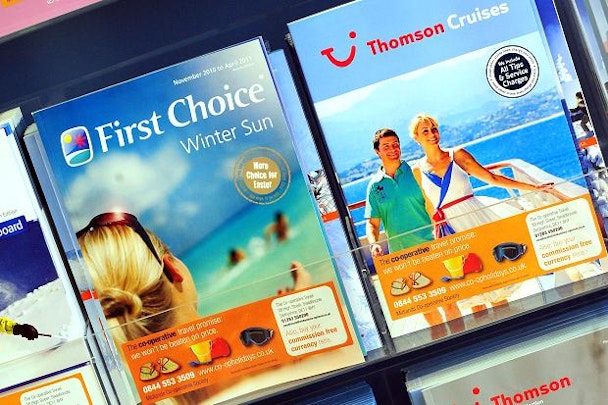TUI: ‘We’d rather not advertise than have one ad appear in the wrong place’
Brand safety is the key tension TUI’s digital marketers are trying to resolve, with the company being resigned to stopping campaigns that are at a risk from appearing on unsavoury sites.

The travel business is seeing the benefits of hiving off some of its budget to ensure brand safety in the belief that done right it can lift performance. From blacklists and whitelists to tasking its agencies to make better inventory purchases, TUI is working to cut ad misplacement at the source, wary of how fast a single mislaid ad can get passed around among friends and eventually make a good headline.
As part of the shift, TUI is scrutinising potential partners to ensure their procedures comply with the Digital Trading Standards Group’s (DTSG) own. It is also working with Google to get a much better feel for whether its ads are being bought in the right places.
“[Brand safety] is the number one issue [for us],” said Christian Armond, TUI’s general manager of digital marketing at a JICWEBS town hall event yesterday afternoon (24 February). “I’d rather not advertise in exchanges than be compromised with my ads appearing in the wrong place.”
That fear of being rumbled has pushed brand safety top of mind for many marketers now during what can only be described as a clean-up phase for digital. And while the growing use of brand safety and fraud prevention technology to hunt undesirable inventory will inevitably inflate prices of programmatic buys, for Armond it’s a cost worth accepting given the potential damage to the brand.
“Making sure that our ads don’t appear next to coverage of disasters like bomb attacks, the terrible events in Tunisia or plane crashes is one the biggest challenges we have at the moment,” said Armond. “We have to constantly fight to make sure our ads aren’t appearing in those areas and more often or not we’re able to do that with tools that are available and that generally means we stop advertising because we can’t run the risk of even one ad appearing next to content like that.”
Part of that risk stems from the growing number of publishers sourcing inventory off-site and packaging it up together with their own. While there’s nothing inherently dubious about this practice, it means a publisher is effectively acting as an intermediary and so needs to be able to assure advertisers that outsourced inventory is brand safe.
“I don’t see it becoming an issue,” said Armond. “It just adds more routes to market. It gets cloudy when you consider the exchange part, which could be a challenge because then that automatically causes the issues around viewability. I think a lot of people will talk about moving to much more publisher direct models and the exchange percentage moving down over time unless it’s your minimum spend.”
Brand safety can take many forms; it can be dented by an ad appearing in inappropriate places like gambling or porn sites, both of which Armond asserts aren’t where he wants his brands, as well running on illegal sites. Consequently, what one advertiser considers brand safe may not the be the same for another and importantly many are blaming agencies for this even becoming an issue in the first place.
Speaking to the agencies in attendance at the event, the travel marketer said: “It feels to me that if I’m already paying you for the advertising that we’re delivering the onus then is on you to make sure that is legal, proper and right for us. We shouldn’t end up double paying for that.”
The complexity of the issue was highlighted following in a recent investigation by The Drum that found a promoted story link with a salacious image at the bottom of an ESPNW article about domestic violence. It was quickly pulled after ESPN and Outbrain, the content discovery platform that served the link, were both alerted.
He continued on that while the business could be “spraying out millions of impressions or banner ads”, it only takes one or two to appear in the wrong place for the “Daily Mail to get up in arms about it all”.
Marketers’ appetite for better transparency also extends to the issue of viewability standards. TUI is working closely with its media agency to ensure the average viewability rate for its ads are above the 50 per cent industry standard measure. It’s identifying the different average viewability rate for each of its partners and then establishing how effective the performance of its ads are when it pushes up the rate.
“I think there comes a tipping point where you say I will only trade on 100 per cent viewability,” opined Armond. “If we keep constantly accepting this mediocrity of viewability then we’re going to end up killing the golden goose of display and then you’ll likely see more money going toward native."

